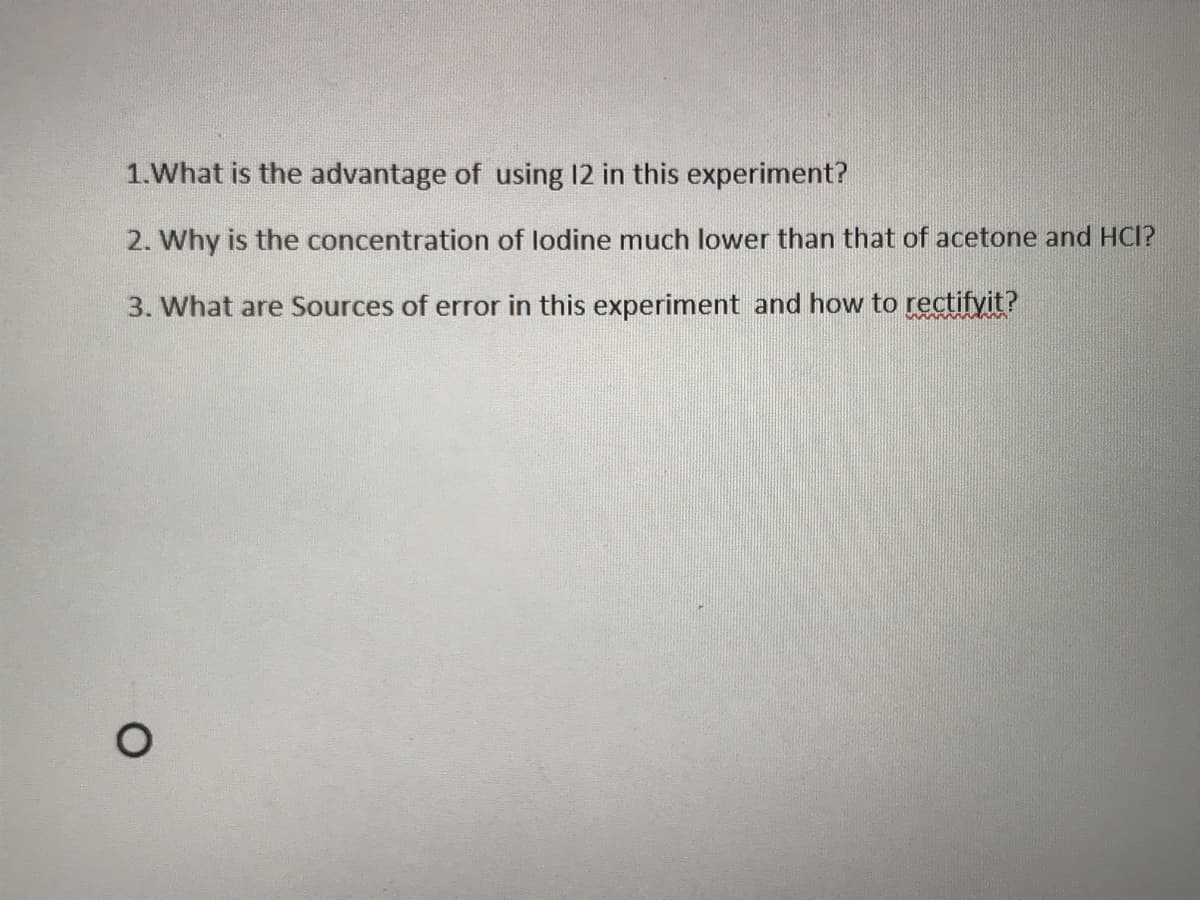1.What is the advantage of using 12 in this experiment? 2. Why is the concentration of lodine much lower than that of acetone and HCI? 3. What are Sources of error in this experiment and how to rectifyit?
1.What is the advantage of using 12 in this experiment? 2. Why is the concentration of lodine much lower than that of acetone and HCI? 3. What are Sources of error in this experiment and how to rectifyit?
Macroscale and Microscale Organic Experiments
7th Edition
ISBN:9781305577190
Author:Kenneth L. Williamson, Katherine M. Masters
Publisher:Kenneth L. Williamson, Katherine M. Masters
Chapter38: Grignard Synthesis Of Triphenylmethanol And Benzoic Acid
Section: Chapter Questions
Problem 9Q
Related questions
Question
100%
The experiment is Rate of chemical reaction: the iodination of aceyone

Transcribed Image Text:1.What is the advantage of using 12 in this experiment?
2. Why is the concentration of lodine much lower than that of acetone and HCI?
3. What are Sources of error in this experiment and how to rectifyit?
Expert Solution
This question has been solved!
Explore an expertly crafted, step-by-step solution for a thorough understanding of key concepts.
Step by step
Solved in 2 steps with 1 images

Knowledge Booster
Learn more about
Need a deep-dive on the concept behind this application? Look no further. Learn more about this topic, chemistry and related others by exploring similar questions and additional content below.Recommended textbooks for you

Macroscale and Microscale Organic Experiments
Chemistry
ISBN:
9781305577190
Author:
Kenneth L. Williamson, Katherine M. Masters
Publisher:
Brooks Cole

EBK A SMALL SCALE APPROACH TO ORGANIC L
Chemistry
ISBN:
9781305446021
Author:
Lampman
Publisher:
CENGAGE LEARNING - CONSIGNMENT

Chemical Principles in the Laboratory
Chemistry
ISBN:
9781305264434
Author:
Emil Slowinski, Wayne C. Wolsey, Robert Rossi
Publisher:
Brooks Cole

Macroscale and Microscale Organic Experiments
Chemistry
ISBN:
9781305577190
Author:
Kenneth L. Williamson, Katherine M. Masters
Publisher:
Brooks Cole

EBK A SMALL SCALE APPROACH TO ORGANIC L
Chemistry
ISBN:
9781305446021
Author:
Lampman
Publisher:
CENGAGE LEARNING - CONSIGNMENT

Chemical Principles in the Laboratory
Chemistry
ISBN:
9781305264434
Author:
Emil Slowinski, Wayne C. Wolsey, Robert Rossi
Publisher:
Brooks Cole